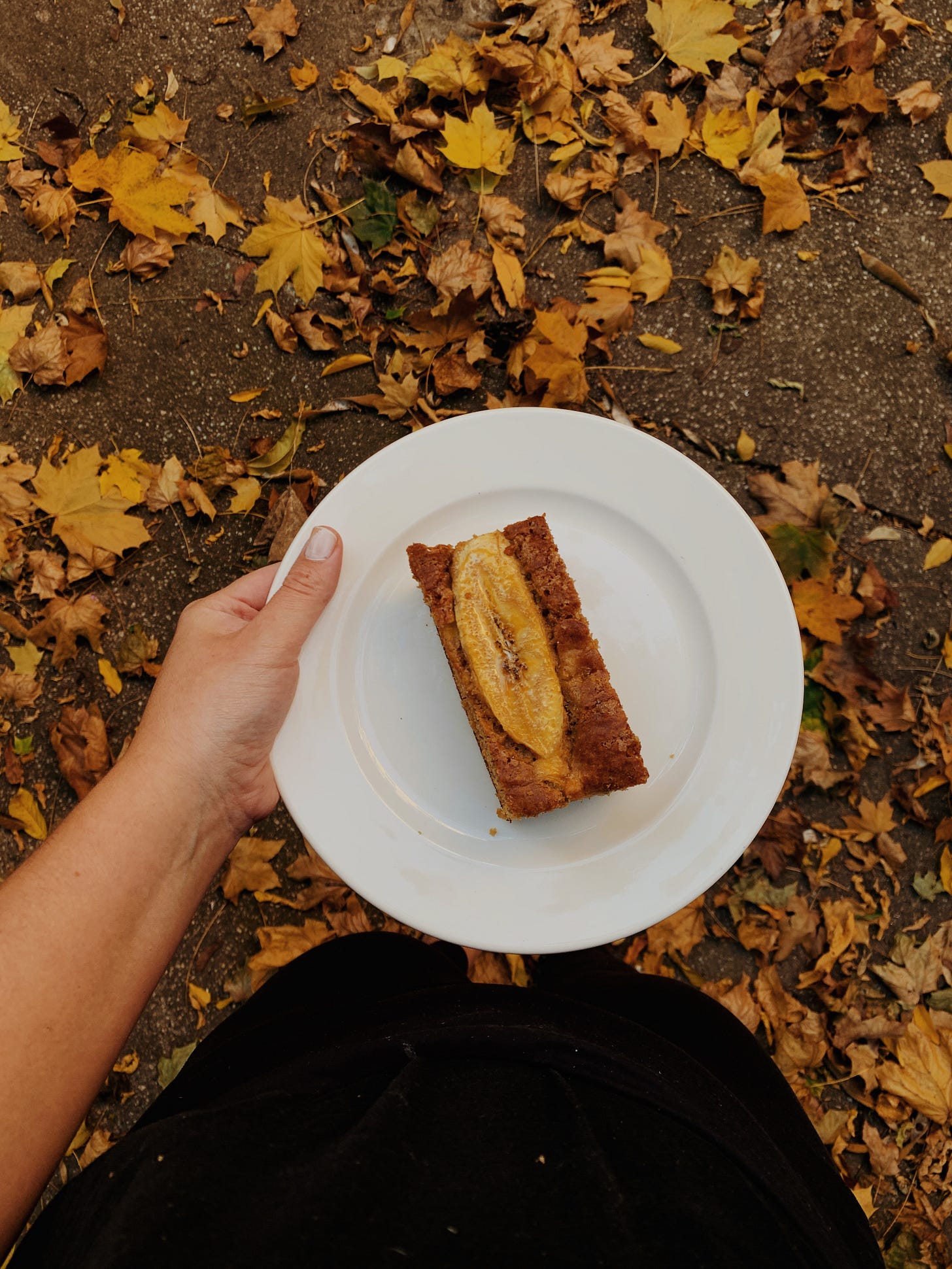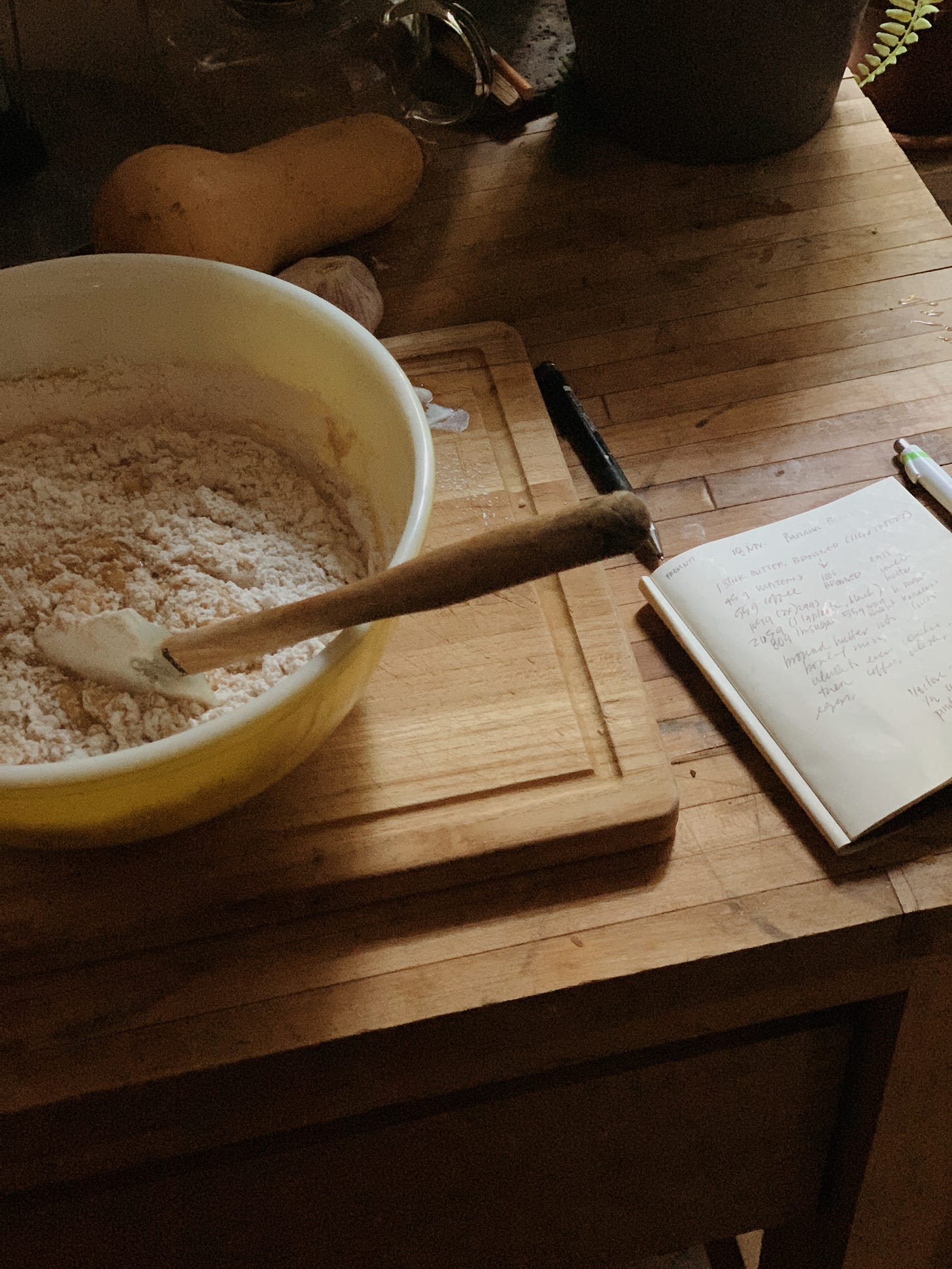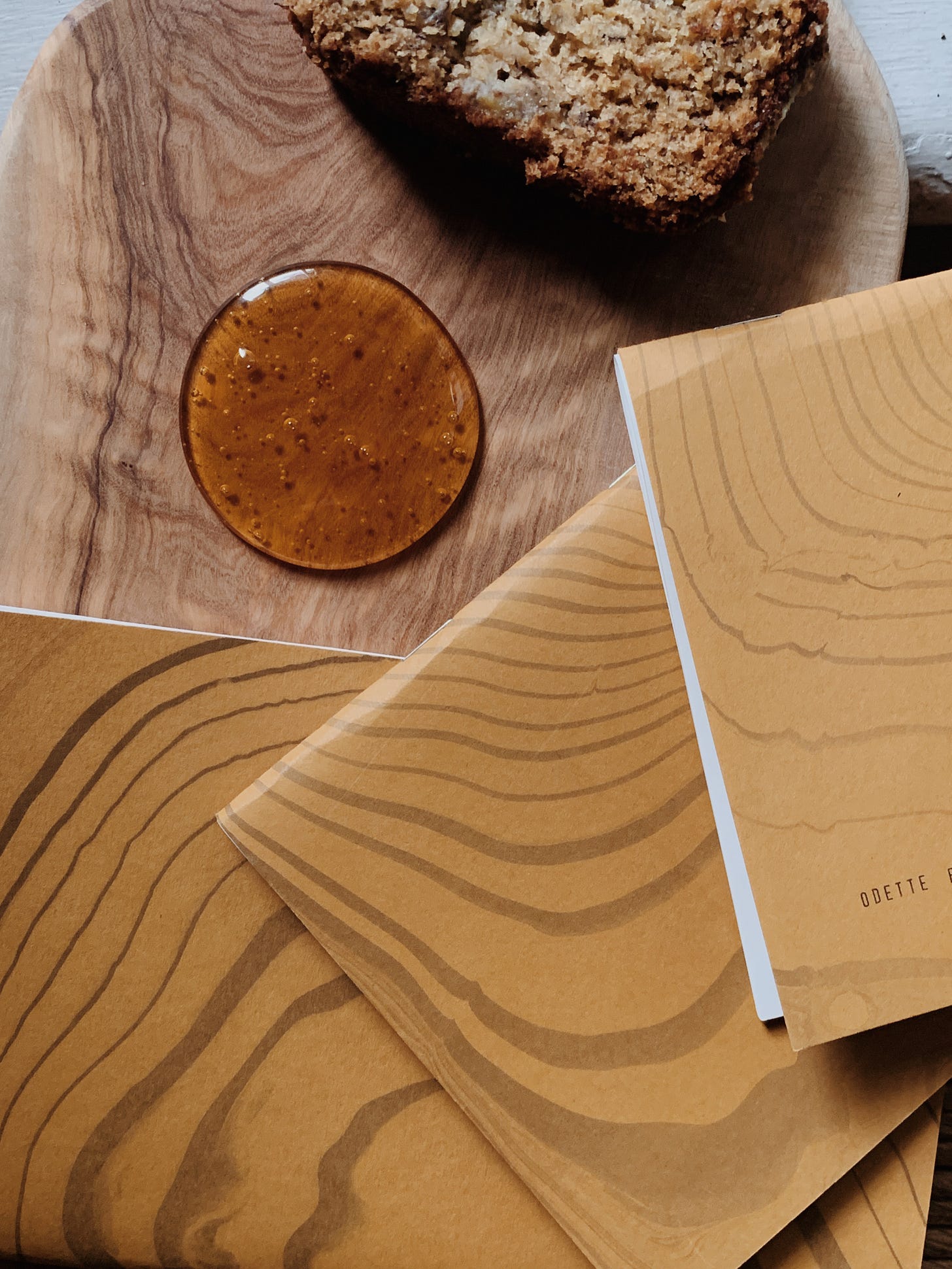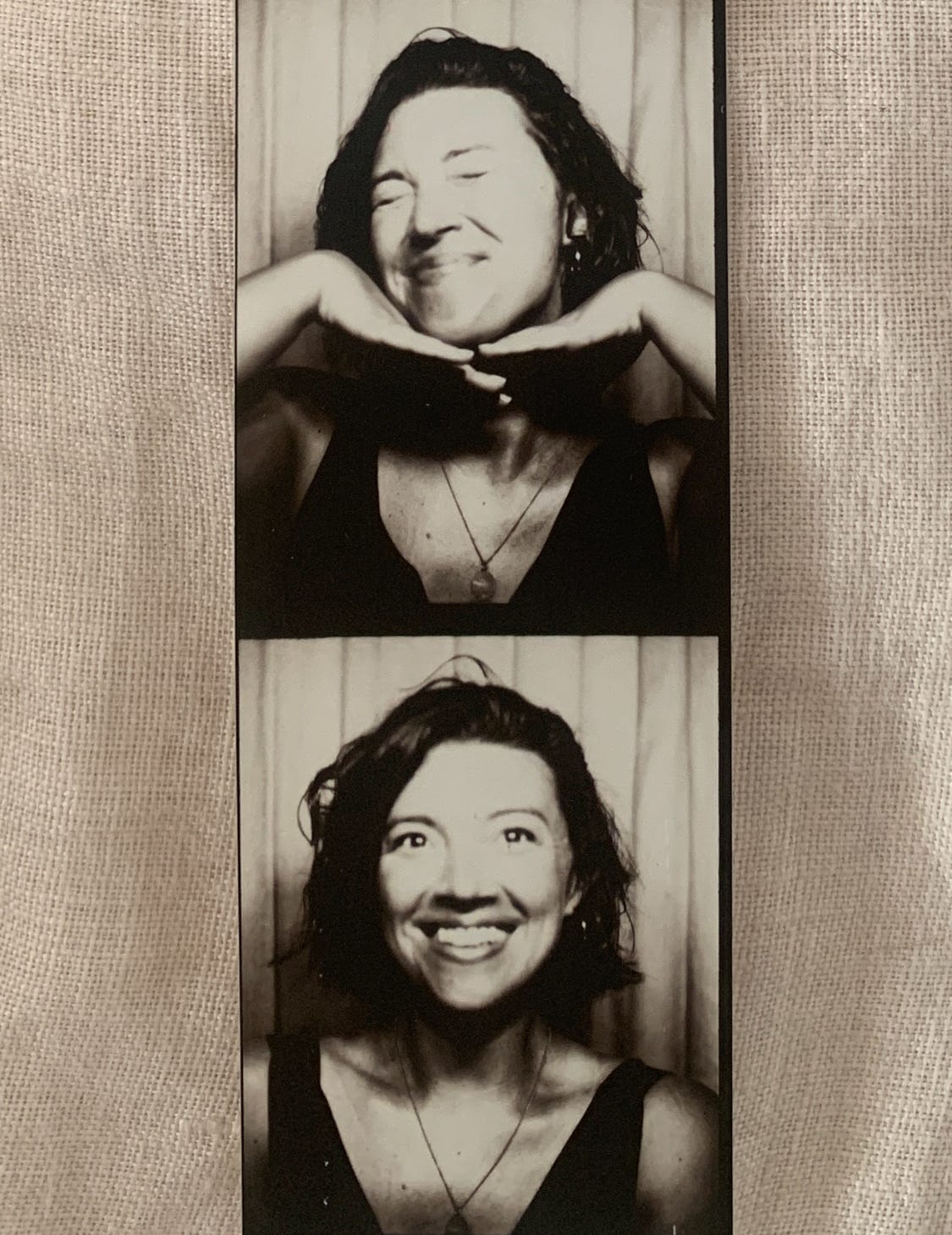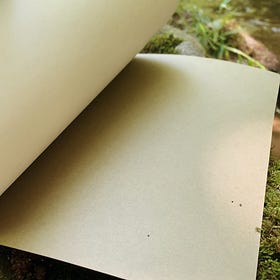Through the sliver of window I look out into the backyard from the solitude of the kitchen. Sun comes down over yellow gold leaves across the concrete, and there is darkness and bright of waning daylight as it reaches across the horizon. By the afternoon, earlier than not, the sun will disappear; the early night takes form, surrounding the day with darkness. On the corner of the counter, sit two plantains, yellow like daylight, blackening. Fruit and daylight growing darker each day, whispering into the atmosphere of time passing.
I pull ingredients and click to spark the flame at the stove. From the center of the otherwise quiet room, a crackle. The kitchen is silent, save for butter bubbling in a small saucepan on the stovetop and the sound of the wooden floorboards shifting. The space from the root of flame to the edge of the pan is a dialogue between time and the depth of flavor in butter: milk fat separates, caramelizing, then coalescing into darkened dots at the base. Along the surface of the mixture, air pushes up from underneath a layer of fat to constellate as they arrive to a simmer, as if each spark and pop of air up to the surface is the smallest infinity of a new star forming. Sun yellow butter cooks down, turning in time from bright to honey brown, into a deeper, browned state, swirled in the heating pan.
Day off, dim light, kitchen. The sun inches into evening. Leaves make paper symphonies across the concrete, but still no frost. I am making a cake. To the basin of the chartreuse bowl I add miso, then coffee, and the hot butter, now an amber brown, whisking to mix. Time had its way here changing the chilled butter in its solid form into a deeper, darker state. The result is butter with a more complex taste: nutty and dark. I decrease the sugar, and then mash in the plantains.
A lot of cooking and baking is standing, sensing, noticing, paying attention — a meditation on the moment, in which you are using all of your senses, ideally. You are there, facing your board, blade, or flame, tuning into the timing, taste, texture, and pacing. You are present and activating your instincts. You are waking up your ideas and cravings and taste, and hopefully feeling your breathing, tuning in to the moment in the process. Your eyes will cue you in to where the hottest parts of the pan is, and your hands will tell you about the nature of the crumb, and your tongue will tell you where the imbalance is, where the need for heat, salt, sugar, acid, fat, or time.
Flavor develops in time and layers. Depth comes from layering complexity, and remembering the elements of heat and time, and through cooking, tasting, and baking, I learn about the balance, flavor, limits. I learn to trust the instinct of intuition, listening to the lists of flavors that arise in body, tongue, mind, or the moments when something internally says turn the oven up, turn the flame down, or let it go longer. Longer takes the flavor from brighter to golden. Longer is a learning in finely tuning in and practicing patience. Heat and friction give way to state change. Kitchen, a teacher.
Into the bowl I mix in flour, folding gently to mix, and pour into the pan. I take the sharpened knife on an angle and cut the remaining plantain, dotting the top of the light batter in rows. An exhale and pan is in the oven, and the kitchen is silent again, save for the rhythmic click of the oven retaining heat in the darkening room.
The cake I pull from the hot void is not just me, on this day off, feet grounded on the wooden slats, standing by the stove; it is time, balance, interdependence. It’s a farmer, somewhere, growing wheat, feeding dried stalks into machine breaking down the husk and grain for the flour. It’s paper production, packaging, fluorescent lighting in the bright of the grocery aisles. It’s machete, fierce hand, or another machine, somewhere, cutting down the sugarcane, rooted into the soil, feeding from the rain and the nutrients, and all of the water needed. It’s plantain, not native to the region, grown from the ground, picked from tree, then sorted, packaged, and flown, to New York City. It’s the coffee beans, acid and earthy, grown from some mountainous town, noticed and tended to, then picked, packed, dried, transported, and eventually ground, then brewed with water, time, and heat.
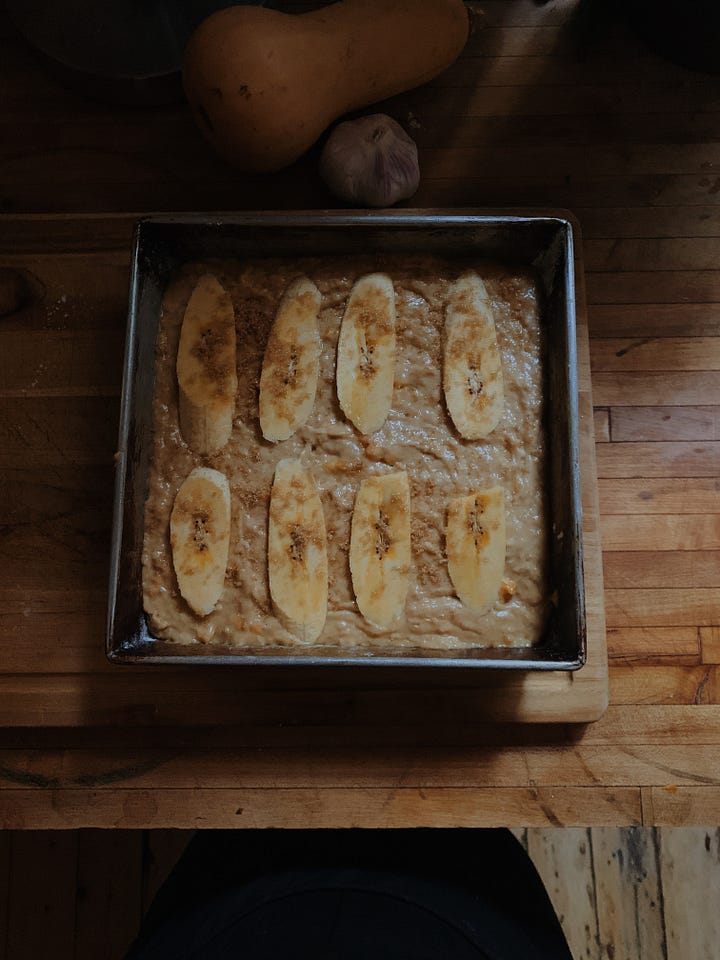
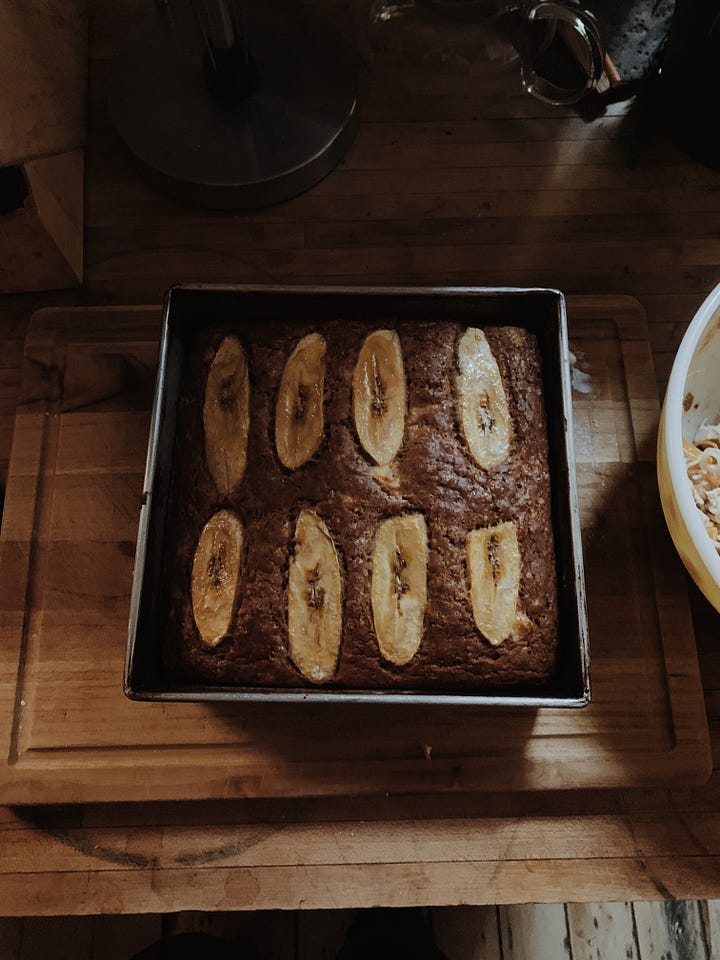
I think about the layers of depth and complexity of flavor and our own humanity and histories as timer ticks and daylight decreases. The seasons, landscapes, and floor boards we’ve walked across to stand and sense in front of hot stoves and kitchen tables, and the way heat and friction and coolness transform us, and all the many hands, homes, and moments, that have held and supported each of us, present and past, to arrive here.
Cooking becomes a teacher for balancing: how to take what’s bitter and work with it, how to hold the effort of patience and pacing, how to balance out the discomfort that yields from something too sweet. How to go for depth. I cook, and stay with the heat of the day, time, flame, learning how to turn toward own depth and complexity, trust my own timing. Butter, caramelized, meets with the soft salt of white miso, the sticking sweet of the plantain, the brighter dark sweet of light brown sugar. When it emerges, cools, and I bite down, the cake is, as I’d hoped for: balanced.





